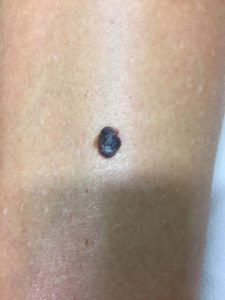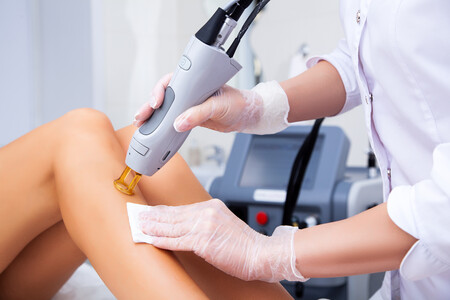SKIN CANCER TREATMENT IN CANTERBURY
Skin cancer is the most common form of cancer in the UK, with over 400 people being diagnosed every day. There are three main types of skin cancer, basal cell carcinoma, squamous cell carcinoma and melanoma. The first two are both known as non-melanoma skin cancer and are the most common varieties.
Non-melanoma skin cancer refers to a group of cancers that slowly develop in the upper layers of the skin and are the most common forms. These are identified by a lump or discoloured patch on the skin. Melanoma is less common and can be more serious and aggressive as it can spread to other organs in the body. The most common sign of melanoma skin cancer is changing moles.If you know the main signs and symptoms to look out for, an early diagnosis typically means a better long-term prognosis for recovery.

REQUEST A CALL BACK
To book an appointment please fill in this form and one of our team will give you a call back. If you are looking to change an appointment or have any questions around an existing booking, please give us a call.
MELANOMA SKIN CANCER
The appearance of a new mole, or any changes to an existing mole anywhere on the body, could be an indication of a melanoma. Pay particular attention to irregular sized or shaped moles, and those that itch or bleed. Melanoma is less common than other types of skin cancer, accounting for around 5% of all cases, but can spread quickly to other parts of the body, so if in doubt get it checked out by your doctor as soon as possible.
As with all skin cancers, exposure to ultraviolet light (UV light) is the common cause. You also have an increased risk to developing malignant melanoma if you have lots of moles or freckles. If you have a pale skin type which is prone to burning or have a family history of the disease you are also more at risk.

NON-MELANOMA SKIN CANCER
There are two more common types of non-melanoma skin cancer, both of which usually develop in the epidermis, which is the outermost layer of the skin:
Basal Cell Carcinoma
Basal cell carcinoma starts in the basal layer of cells that line the epidermis, and accounts for around 75% of all skin cancer cases. Basal cell carcinomas can appear anywhere on the body, but most commonly found on areas of the body which are more frequently exposed to sunlight, including the face, head, neck and ears. There are several variants of basal cell carcinoma and in all cases, the lump may slowly get bigger, become crusty, bleed or develop into a painless ulcer.
Squamous Cell Carcinoma
Squamous cell carcinoma starts in the cells which line the top layer of the epidermis, and accounts for around 20% of all skin cancer cases. Risk factors of SCC include those with pale skin who are more likely to burn in the sun, those who have spent prolonged periods exposed to sunlight and those who have used tanning beds. If you have had SCC before, you may also be more likely to develop the condition again. Squamous cell carcinoma is not hereditary, however some of the risk factors including skin type are likely to run in families. SCC are also more common in those with reduced immune systems, either due to medical treatment or diseases which affect the immune system.
One of the first symptoms that could indicate the presence of non-melanoma cancerous cells is the appearance of a lump or patch on the skin which doesn’t heal within a few weeks. Cancerous lumps are typically red and firm, whilst patches are usually flat and scaly. Any skin abnormality that has not healed after four weeks should be checked out by a specialist. It is unlikely to be cancer, but it’s always best to get these things checked out for your own peace of mind.
SAFE AND EFFECTIVE SKIN CANCER TREATMENT
Here at The Canterbury Skin and Laser Clinic we offer a range of treatments for skin cancer depending on the type and the location of the lesion.
We use photodynamic therapy (PDT) to remove certain types of superficial precancerous lesions which affect the skin, including basal cell carcinomas, Bowen’s disease, and actinic keratoses. This modern treatment is safe and highly effective in removing precancerous lumps and patches, without causing any damage to the surrounding healthy cells. PDT manipulates the chemical interaction between light and a light-activated drug, leading to a series of chemical reactions that kill off any diseased cells, leaving healthy cells intact, and reducing the potential for scarring.
Small skin cancers can be removed by excision surgery. This surgery involves cutting out the cancerous cells as well as an area of healthy skin around it. This area of healthy skin is checked to ensure all the cancerous tissue has been removed. The surgery is likely to be carried out using local anesthetic and a skin graft may be needed depending on the amount of skin removed. Curettage and electrocautery can also be used as treatment for small skin cancers. This involves using a small blade to scrape the cancer from the body and then using heat or electrocautery to remove any remaining cancer cells and to stop any bleeding.
Cyrotheraphy, also called cyrosurgery is a skin cancer treatment which uses liquid nitrogen to freeze and destroy cancerous cells. This treatment works when the cancer is small and only affects the upper layers of the skin. The liquid nitrogen is sprayed onto the cancerous cells and a scab is formed, about two weeks later the scab will fall off along with the cancerous cells. You may need a couple of treatments to fully remove the cancerous cells.
During your consultation, your condition will be assessed and the most suitable treatment discussed with you.
WHY CHOOSE CANTERBURY SKIN AND LASER CLINIC?
Here at Kent's leading private skin and laser clinic, our experts are specialists in all aspects of dermatology, skin cancer, anti-ageing and beauty treatments. We are one of the few skin clinics in the UK where all medical consultations and treatments are provided by specialist doctors with Dermatology experience and laser training.
Canterbury Skin and Laser Clinic is regulated by the Care Quality Commission, ensuring the best level of treatment is provided to you in a safe environment. Our Clinical Lead Dr Mark Hudson-Peacock is a member of the British Association of Dermatologists, the British Laser Medical Association, the British Hair and Nail Society, the European Academy of Dermatology and Venereology and is certified by the Consulting Room. We have won many awards including the WhatClinic Patient Service Award in 2019 and the ghp Healthcare and Pharmaceutical Awards 2019.
CONTACT US
Address
26 Castle Street,
Canterbury,
Kent,
CT1 2PX
Opening Hours
Monday: 8:30am - 6:00pm
Tuesday: 8:30am - 5:00pm
Wednesday: 8:30am - 7:00pm
Thursday: 8:30am - 7:00pm
Friday: 8:30am - 5:00pm
Saturday: 8:30am - 5:00pm
Sunday: Closed
REQUEST A CALL BACK
If you are looking to arrange an appointment, please fill in this form and one of our team will give you a call back to arrange a consultation with one of our expert dermatologists. If you are looking to change an appointment or have any questions around an existing booking, please give us a call.

